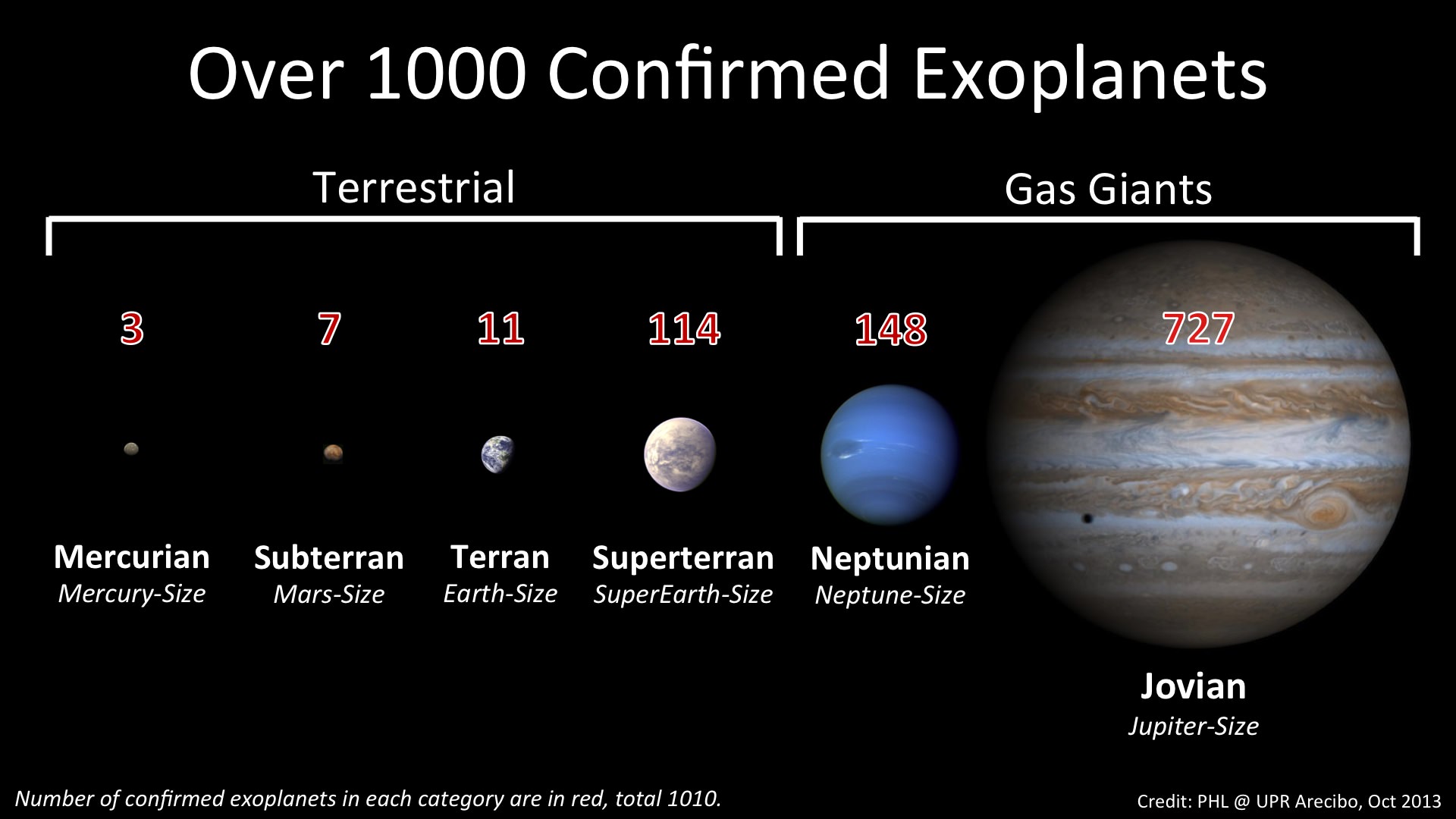

More than 1,000 exoplanets have been confirmed and cataloged (PHL @ UPR Arecibo)
The fun and challenge of exoplanet science is the planets are so far away and so tiny. Figuring out what they look like isn’t as simple as just pointing a telescope and observing. This new video from NASA explains how astronomers use the parent star to figure out the planet’s size, mass, atmosphere and more.
Alien planets are generally detected through blocking the light of their parent star (from the vantage point of Earth) or through their gravitational effects that cause the star to slightly “wobble” during each orbit. These methods can reveal the mass and size of the planet. As for the atmosphere, that takes a bit more work.
“As the planet crosses its star, its atmosphere absorbs certain wavelengths of light or colors, while allowing other wavelengths of light to pass through,” the video stated.
“Because each molecule absorbs distinct wavelengths, astronomers spread the light into its spectrum of colors to see which wavelengths have been absorbed. The dark absorption bands act as molecular fingerprints, revealing the atmosphere’s chemical makeup.”
And this science can reveal amazing things, such as the recent Hubble find of a “clear signal” of water in five exoplanet atmospheres. The video has more detail on how individual elements are identified, so be sure to check it out.
Venus is very variable. Its surface constantly changes from volcanic activity, and the difference between…
Hydrogel protection could be crucial for safe human space exploration. Space radiation: the threat is…
When massive stars reach the end of their life cycle, they undergo gravitational collapse and…
Planets are born in swirling disks of gas and dust around young stars. Astronomers are…
Sometimes, things across the vast Universe line up just right for us. The Einstein Ring…
Our Sun is a giant plasma windbag spewing a constant stream of charged particles called…